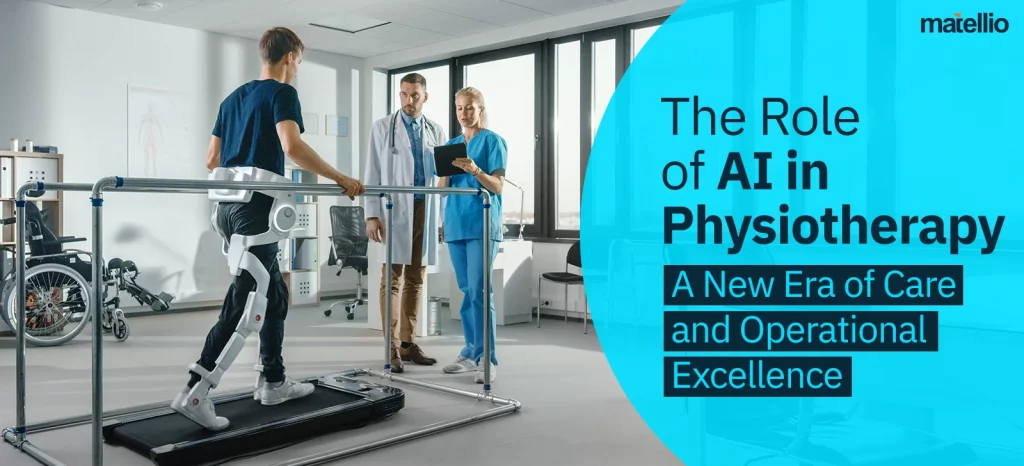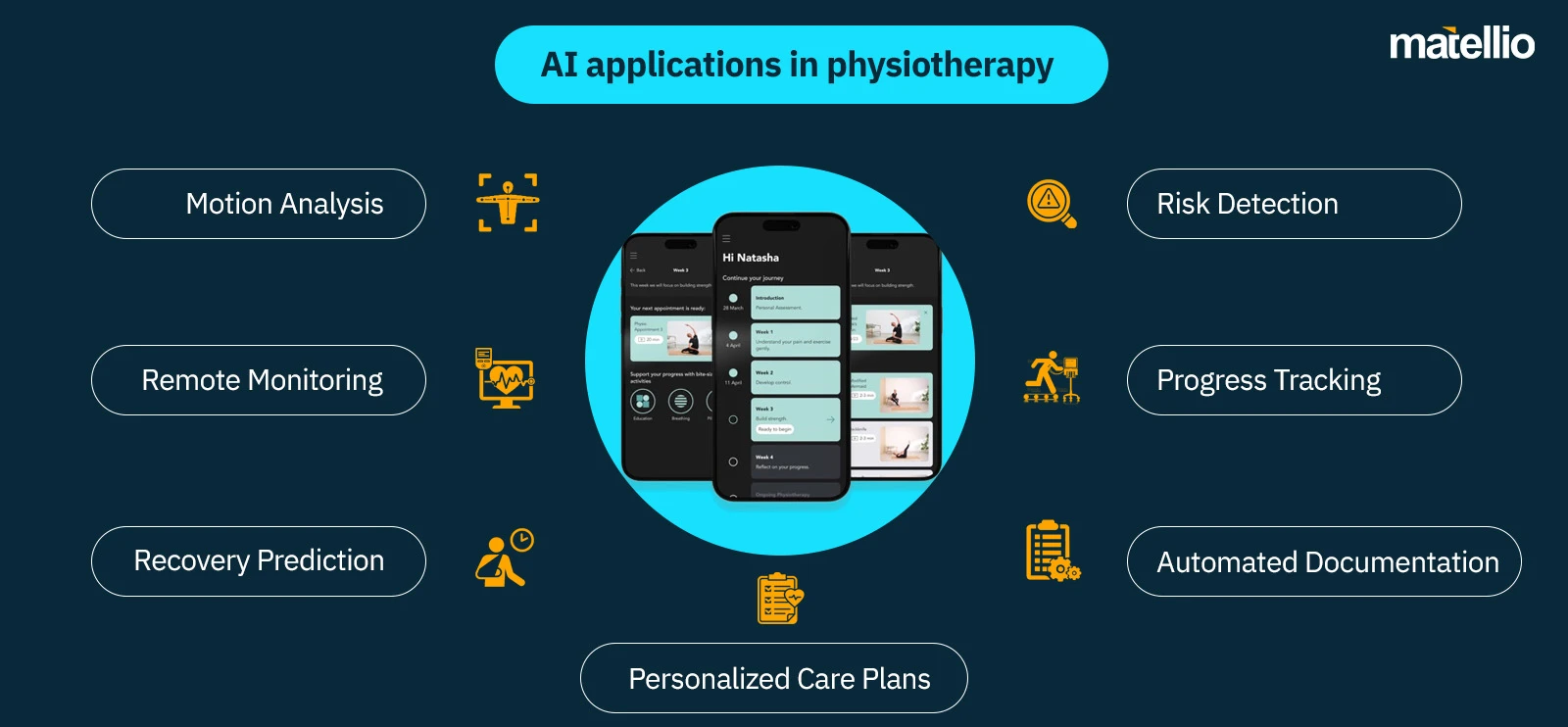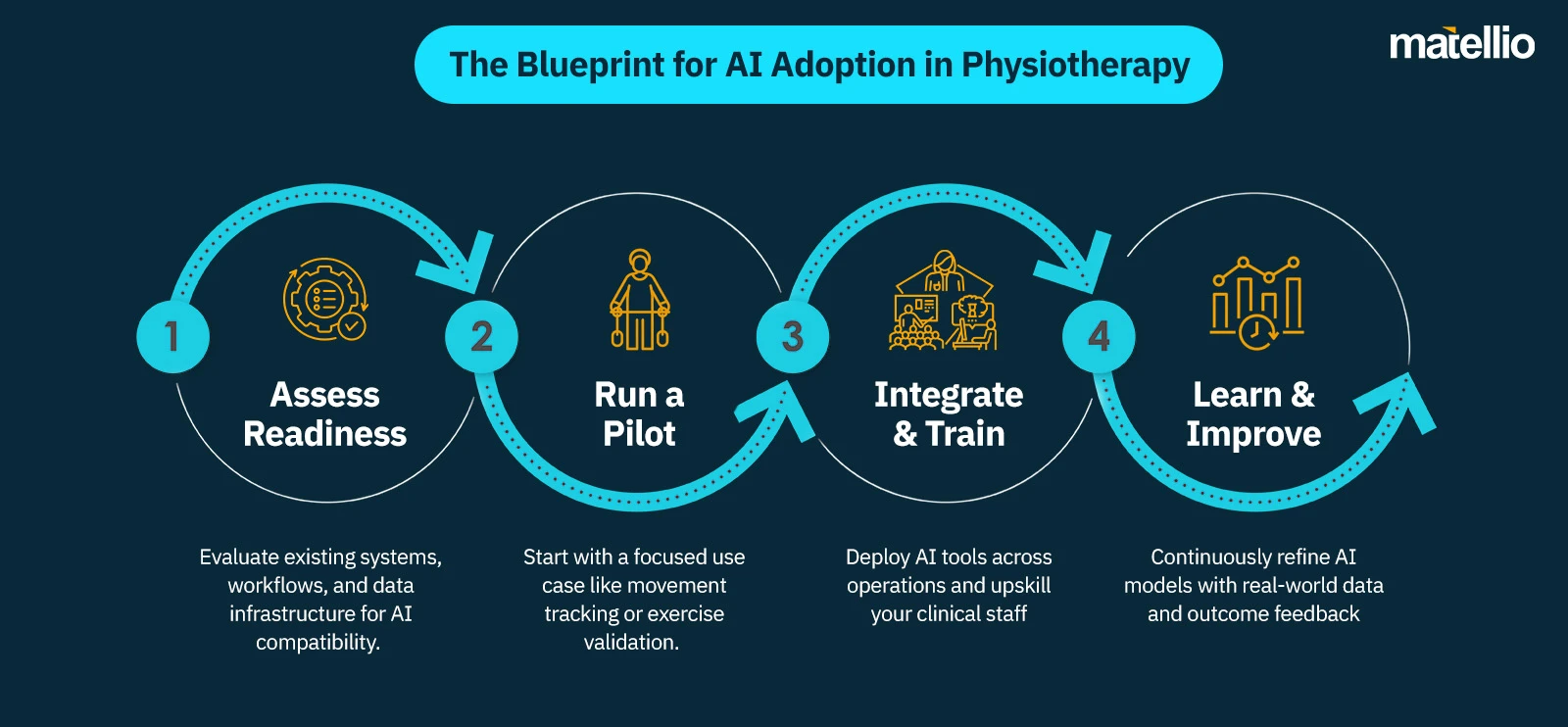
The role of AI in physiotherapy is ushering in a transformative era for rehabilitation services. Traditional physiotherapy, while foundational, often operates reactively and demands substantial resources. Artificial Intelligence (AI) is now quietly revolutionizing this field, enhancing diagnostic precision and patient outcomes.
Studies have shown that AI applications in physiotherapy can achieve diagnostic accuracy rates between 95.8% and 99.9%, depending on data input. Moreover, a significant majority of physical therapists—80.9%—anticipate AI’s integration into their practice, with 78.6% recognizing its potential to significantly impact their work.
Real-world deployments are already validating these expectations. In Scotland, Flok Health’s AI-powered physiotherapy assistant “Kirsty” has helped reduce NHS wait times across 126 clinics while improving patient satisfaction. In the U.S., Sword Health’s digital platform combines AI and clinical oversight to deliver scalable. These examples show that AI in physiotherapy isn’t just promising—it’s already making measurable impact.
As AI becomes the cornerstone of scalable and effective healthcare services, physiotherapy centers, rehabilitation facilities, and geriatric care providers are poised to harness its full potential for superior patient care.
Hidden Frictions Holding Back Innovation in Physiotherapy
Let’s face it—your patients are aiming to walk stronger, lift longer, and recover faster, but your back end might still be limping behind. While your clinicians work miracles on the floor, your systems behind the scenes are—how do we say this politely—stuck in a time warp. Below the surface of patient care excellence lies a tangled web of operational bottlenecks and outdated tech that’s quietly throttling innovation.
If you’ve ever felt like your organization is sprinting through molasses while trying to modernize, you’re not imagining it. Let’s call out the usual suspects, shall we?
No AI in Motion Analysis
Your patients walk in expecting a precision-guided recovery, but your therapists are left with analog-level feedback. AI in healthcare has already revolutionized diagnostics and monitoring—so why are we still relying on video replays and goniometers? When you leave advanced computer vision out of your motion analysis workflow, you’re not just behind—you’re invisible on the innovation radar.
Manual Imaging Review
Still, zooming in on scans manually? In 2025? It’s like using candlelight in a smart home. It’s time to rethink the role of AI in physiotherapy, especially in imaging interpretation. With intelligent algorithms doing the heavy lifting, your experts can finally focus on what they do best—clinical excellence, not digital scavenger hunts.
One-Size-Fits-All Care Plans
Cookie cutters belong in kitchens, not recovery plans. When every ACL tear gets the same routine, you’re not treating humans—you’re treating checklists. It’s high time to introduce AI tools for physiotherapy that help create adaptive, patient-specific recovery protocols based on historical data, real-time inputs, and outcome predictions. Why settle for generic when precision is just a click away?
Blind Resource Planning
It’s like playing Tetris with closed eyes. Staff, equipment, therapy rooms—all critical, all misaligned. What’s missing? Robust tools for physiotherapy that sync your scheduling, capacity, and patient load in one unified interface. Less chaos, more control. Imagine the calm of seeing your resources aligned like clockwork.
No Real-Time KPIs
What’s working? What’s failing? What’s on fire? If you don’t know in real time, you’re just managing by vibes. With AI physiotherapy platforms, C-suites can finally monitor what matters: treatment success rates, engagement levels, session effectiveness, and financial efficiency—all through a centralized command center.
Compliance Risks Loom
HIPAA, GDPR, CMS audits—they’re not bedtime stories. Outdated systems open cracks for risks to creep in. The solution? A shift toward physiotherapy and AI-enabled compliance tools that monitor flags and automate reporting in real time. It’s not just about checking the boxes—it’s about sleeping better at night.
Gaps in Geriatric Support
Older patients need hybrid care models—some virtual, some in-person, all intelligent. Yet most systems today treat a 78-year-old stroke survivor the same way they treat a 28-year-old athlete. That’s where AI tools for physiotherapy step in, tailoring intensity, instructions, and engagement style to suit geriatric-specific needs—from simplified voice commands to fall-risk monitoring.
Caregivers Left Out
As care moves beyond the clinic, family members and at-home caregivers become critical—but most platforms leave them uninformed. They don’t receive updates, progress reports, or alerts. Modern tools for physiotherapy must include collaborative dashboards and check-in triggers for caregivers to ensure better adherence and emotional support for patients recovering at home.
No Smart Escalation Protocols
Some patients doing home therapy need intervention urgently—but your system doesn’t know that. Without intelligent triage, high-risk cases are treated the same as routine ones. By integrating tools used in physiotherapy that analyze movement patterns, pain trends, and fatigue levels, care teams can auto-flag cases needing real-time escalation—before the damage is done.
Missing Behavioral Cues
You can track attendance, but you’re missing mood, motivation, and mental fatigue. These invisible signs often precede drop-offs or regression. Enter physiotherapy AI systems—capable of detecting tone shifts, hesitation, and disengagement patterns to prompt timely therapist intervention. It’s not just about tracking sessions; it’s about understanding the human behind them.
Redefine Recovery with Innovation and Future-Proof Your Physiotherapy Center Today! As healthcare rapidly evolves, physiotherapy businesses must embrace Artificial Intelligence (AI) not just to keep up—but to lead. AI isn’t just innovation—it’s impact, driving better outcomes, leaner operations, and smarter growth. A study shows 96% of healthcare tech leaders believe AI provides a competitive edge. By integrating physiotherapy AI, clinics can streamline operations, reduce costs, and offer next-level care—setting themselves apart in a crowded market. AI tools deliver personalized rehab plans and real-time monitoring that cut recovery times and reduce wait periods. These AI tools for physiotherapy improve satisfaction, build trust, and strengthen retention through better outcomes and smoother experiences. AI integration is a bottom-line booster. Clinical AI could save the U.S. healthcare system $150 billion annually by 2026 through fewer errors, better resource use, and automation. With expert AI integration services, physiotherapy centers can maximize ROI while modernizing their workflows. In a field where timing, technique, and personalized care dictate recovery outcomes, physiotherapy can’t afford guesswork anymore. AI is no longer a luxury—it’s the performance multiplier. Here’s how its helping clinicians replace manual intuition with real-time precision and scalable excellence. With advanced computer vision, AI spots subtle irregularities in gait and posture that often escape human observation. It provides a continuous, data-rich lens into patient biomechanics—making AI physiotherapy a leap from assumption to accuracy. AI predicts timelines and setbacks by analyzing patient history, wearables, and feedback. It empowers therapists to personalize milestones and prevent regression—a true demonstration of the role of AI in physiotherapy. AI chatbots deliver instant support for exercises, posture correction, and protocols—reducing supervision load and enhancing patient adherence. They’ve become one of the most trusted AI tools for physiotherapy today. Machine learning creates dynamic care plans based on condition, age, history, and progress—adjusting in real-time. These tools for physiotherapy bring personalized treatment to scale. Wearables and AI-driven dashboards keep therapists informed post-session, ensuring proactive care. These innovations are among the smartest tools used in physiotherapy across top clinics. AI evolves patient routines based on compliance and performance—fine-tuning frequency, intensity, and types of exercise. It’s a powerful union of physiotherapy and AI driving adaptive recovery. At Matellio, we don’t just plug in AI—we engineer purpose-built platforms through our trusted AI development services, aligning tech with your goals and care standards to turn potential into performance. The role of AI in physiotherapy is no longer theoretical—it’s transformative. At Matellio, we help physiotherapy centers bring that transformation to life through intelligent, scalable and secure AI solutions. And because implementation matters just as much as innovation, our technology consulting services ensure your AI adoption is aligned with business goals, operational capacity, and patient care standards. Let’s turn your AI vision into a scalable reality by keeping the lights on and innovation ahead with Matellio. Fill out the form and start building your intelligent physiotherapy future with us.Why Businesses Must Prioritize the Role of AI in Physiotherapy Now?
Enhancing Competitive Advantage
Boosting Patient Satisfaction
Improving Financial Performance

Precision Over Guesswork: The Role of AI in Physiotherapy That’s Turning Heads
AI-Powered Motion Analysis
Predictive Recovery Analytics
Intelligent Chatbots for Real-Time Guidance
Auto-Generated Therapy Plans
Remote Monitoring and Adherence Tools
Dynamic Exercise Recommendations

How Our AI Experts Turn Insight into Action?


